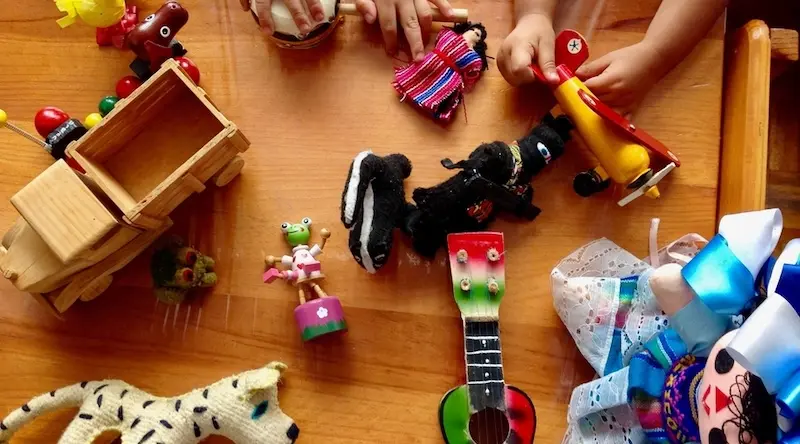settings
children
With Famly since
Size Does Matter
Big chains on the rise over the next ten years? it certainly looks that way, as their ability to operate at scale will make them much more competitive. But does this spell the end for single settings nurseries?
Alistair Says
“The number of providers who now have more than 3 settings is increasing, which in lots of cases means that they are able to drive down costs and provide cheaper childcare.”
Sue Says
“Small local settings may face parents moving to larger ones and I do expect to see more company based providers appearing.”
Tell me more.
Whether it’s the underfunding of the 30 hours childcare initiative, or the influx of foreign investment in nursery chains, it will continue to be challenging for smaller providers to stay competitive.
As nurseries are increasingly run like big businesses, larger chains are able to more easily offer affordable places – their size makes flexible, complete childcare models possible. Smaller providers will need to balance thinking like big business to survive while taking advantage of their size to offer more personal, local care to parents.
The robots are coming…
Just like the rest of the world, nurseries will face plenty of challenges and opportunities from advances in technology. But what impact will it have?
Alistair Says
“There is a diverse range of thinking in the sector, from settings that use no technology to those that use lots. Providers should be aware of the research available into the positive and negative impact of technology on young brains.”
Sue Says
“More and more assessment will be done on line, for instance in the form of interactive learning journeys.”
Tell me more.
Parent expectations are changing. Moving to digital technologies could be crucial to attracting parents who want to be kept updated in a convenient, modern way. Usage of nursery management software is on the rise too, helping to give time back to providers. But it’s not all positive, and providers will need to keep on top of the latest research to ensure that they help prepare children for a digital world, without overexposing them to technology at too early an age.

Taking it outside
When you sit on one side of the see-saw hard, it tends to make for some movement at the other end. The same may be true with technology and nurseries. Will this increased reliance on technology have an impact on how we teach our kids?
Sue Says
“I think we will see a bit of a backlash against a lot of ICT within settings, and more movement towards outdoor provision, for instance, forest schools and outdoor nurseries.”
Tell me more.
Forest schools and outdoor nurseries certainly seem to be increasing in popularity throughout the UK. In fact, there are as many as 360 forest schools in Worcestershire alone. The whole philosophy is to promote learning through positive outdoor experiences, and with Ofsted continuing to rate many of these nurseries as ‘outstanding’, we may be seeing a lot more tree climbing and kids with saws in the near future…

30 Hours? Not even close…
Providers of every size are feeling it. With the lack of proper funding for the latest extended entitlement, many nursery providers will see themselves losing money by providing care that is meant to be free for everyone. How can they respond?
Alistair Says
“Free childcare provision and funding will be the biggest challenge over the next 5-10 years. We need to ensure that politicians are listening to the providers before they make policy.”
Sue Says
“Sustainability in the face of the new 30 hours offer is the biggest challenge facing providers, given the fact that it is underfunded. This could make it difficult for providers to offer the ‘full daycare’ model.”
Tell me more.
Pretty unanimous from the experts. While the scheme has been promoted as free for parents and funded by the government, it will actually be topped up the nurseries themselves. Campaigning for fairer funding is one way you can make a difference. Don’t know where to start?

“We need to think about a developmentally appropriate curriculum that supports children’s learning and exploration through play and quality interaction, not phonics sessions and flash cards.”
Alistair Bryce-Clegg, ABC Does
The big ideas
Keeping playtime
What will it mean to be an early years educator in years to come? Nurseries are now recognised as a crucial part of a child’s development, and that’s a delicate balance between play-based exploration and more formal skills training.
Alistair Says
“We need to think about a developmentally appropriate curriculum that supports children’s learning and exploration through play and quality interaction, not phonics sessions and flash cards.”
Sue Says
“Our role is early education, that means fully rounded play based provision that is appropriate to the needs of small children. I think there is a pressure to change our teaching approaches to become more formal, but I think EY settings are very good at resisting this.”
Tell me more.
Effective childcare is good early years education. It’s just about exactly what that will mean in the years to come. Some studies approve of a move towards more academic early childcare, but the consensus in the sector is that play-based education is always the most engaging and effective for developing little ones. How well the sector can protect this view and make their case to the people in power will be what makes the difference.

Parents expect…
Will parents see more choice in the sector? A more competitive world may mean nurseries will have to shift more focus to meeting the needs of parents.
Alistair Says
“Parent’s views on education are often driven by the media or the thinking of the current government. Nurseries should make sure they are communicating exactly what effective childcare looks like to their parents and carers.”
Sue Says
“Parents are looking for more flexibility and I think we will see full daycare nurseries opening for longer hours.”
Tell me more.
There’s no doubt that parents will start to have more options than ever before. Increased school provision and bigger chains taking over local areas is just the start. There are increasing numbers of parent-run nurseries, pressure for more workplace provision, and even suggestions of intergenerational care being discussed. In the face of all of this, adjusting to meet parent expectations will be more relevant than ever before.

Moving to big school
Right now, the sector is a healthy mixture of school-based providers, locally run settings and larger nursery chains. But changes to government policy may change this all…
Sue Says
“If more schools do provide provision for 2 years plus, it will be interesting to see what happens to the 0-2 part of the sector, as it may no longer be sustainable.”
Tell me more.
The government have promised a capital fund for schools to develop nurseries and rules which insist that all new nursery schools will have to provide nursery places too. What does this mean for the sector? Well, along with more competition it could spell trouble for PVIs, with nurseries being forced to offer more care for 0-2. Those higher staff-to-child ratios will drastically increase their overheads.
Get a personal demo now
Get a guided 1-on-1 tour of the whole platform. See what features are the best fit for you, and ask us as many questions as you like.
Book free demo











